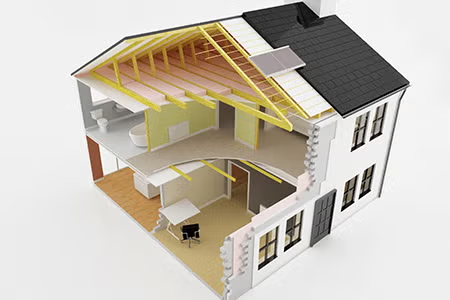Advantages of Foam Insulation
Foam insulation is a popular choice because it can help to lower your energy bills. How? Simply stated, once the air in your home is heated or cooled, the foam insulation helps to effectively seal the gaps and close leaks. The insulation helps prevent outside air from getting in, and inside air from getting out. This creates a comfortable environment in your home, while also reducing your energy usage.
Foam insulation products are often used in walls, attics, floors and for roofing systems in both new construction and renovation projects. Not only are these products widely used for insulating and air sealing, some foams can also help reduce noise and moisture, helping prevent mold and mildew issues.
Spray polyurethane foam, which generally has a high R-rating, can be sprayed directly into gaps, cracks and other surfaces that may contribute to air infiltration resulting in heating or cooling loss. Because it is sprayed on-site, it has the ability to contour to different shapes before it hardens, allowing a high degree of air sealing performance for weatherization and insulation projects. » learn more about the benefits of spray polyurethane foam.
Many of these foam insulation products are used by professional builders, insulation contractors and architects who can also provide you with more information about their features and benefits. Visit the Homeowner section of www.spraypolyurethane.org for safety guidance and the role of a spray polyurethane foam contractor.
Do-It-Yourself (DIY) Weatherization Projects
One-component insulating foam sealant is often used for DIY projects. Also known as “foam-in-a-can,” this product is ideal for filling gaps and cracks around your home, such as around doors and windows. These products are intended for small DIY air sealing projects and are widely available at retail home improvement stores. Be sure to follow the instructions on the label when using these products. This includes wearing safety glasses or goggles, gloves and full-coverage clothing to keep foam off your skin. To learn more about insulating foam sealant and additional safety guidance, visit the “Do-It-Yourself” section of www.spraypolyurethane.org.
As you can see, diisocyanates are important enablers for many of the insulation and air sealing products used to improve indoor comfort, while helping lower energy costs and consumption.
